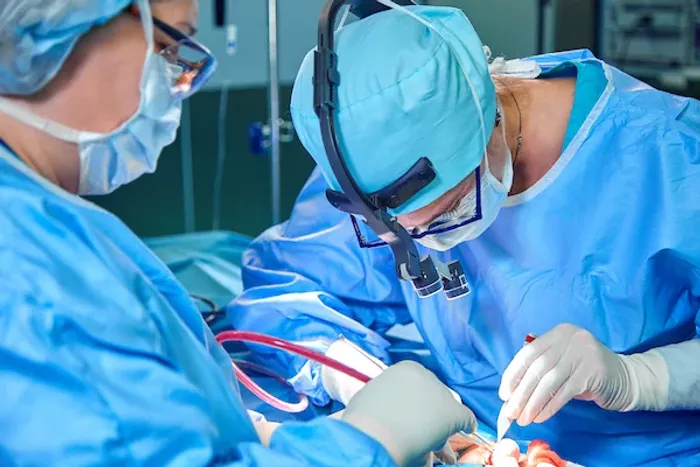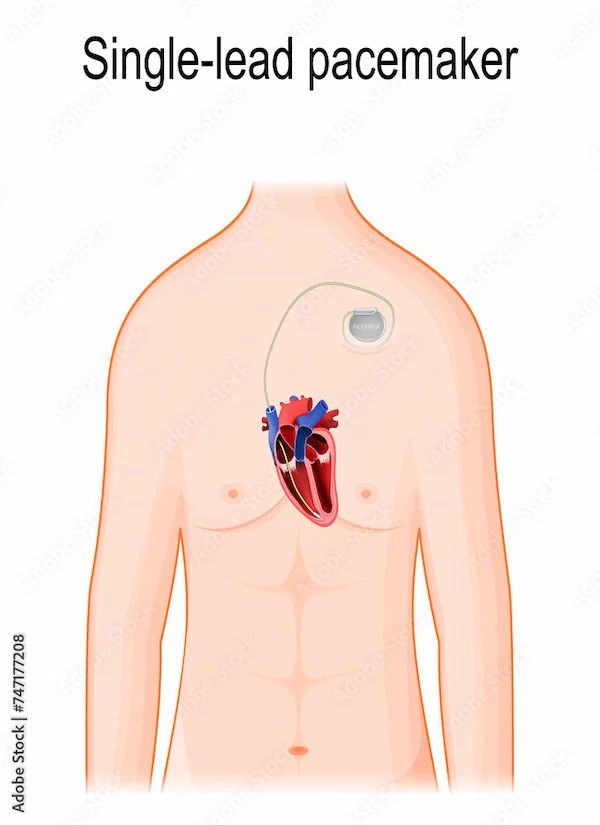Guide to the Role Of Robotics In Cardiac Surgery
Explore the transformative role of robotics in cardiac surgery, offering minimally invasive procedures, faster recovery, and improved precision for heart patients.

Written by Dr. Shaik Abdul Kalam
Reviewed by Dr. Dhankecha Mayank Dineshbhai MBBS
Last updated on 9th Oct, 2025

Introduction
Imagine heart surgery without the traditional large incision down the centre of your chest. Instead, imagine a procedure performed through a few tiny keyhole incisions, leading to less pain, minimal scarring, and a significantly faster recovery. This isn't a scene from a sci-fi movie; it's the reality of modern cardiac care, thanks to the advanced role of robotics in cardiac surgery. This transformative approach is revolutionising how heart conditions are treated, offering a powerful alternative to conventional open-heart surgery. In this guide, we will demystify robotic cardiac surgery, exploring how it works, the conditions it can treat, and the profound benefits it offers patients seeking a less invasive path to healing. We’ll look at the technology behind the precision, who is an ideal candidate, and what the future holds for this innovative field.
What is Robotic Cardiac Surgery? Beyond Science Fiction
Robotic cardiac surgery is a type of minimally invasive heart surgery where a surgeon uses a computer-controlled robot to perform the procedure. It's crucial to understand that the robot does not operate on its own. Instead, it acts as a high-tech extension of the surgeon’s hands, translating their movements with unparalleled precision inside the patient's body through very small incisions, often less than an inch long.
The Human Surgeon is Always in Control
The core principle of this technology is surgeon guidance. The role of the surgeon is elevated from standing over the patient for hours to operating from a nearby console. Using master controls, the surgeon’s hand, wrist, and finger movements are filtered, scaled down, and translated in real-time to the robotic arms, which hold specialised surgical instruments. This system eliminates any tremors and allows for movements finer than the human hand is capable of on its own.
Robotic Surgery vs. Traditional Open-Heart Surgery: A Clear Comparison
The most significant difference lies in the approach. Traditional open-heart surgery requires a sternotomy—a long incision through the breastbone to access the heart. This is highly invasive and involves a long recovery. Here are the key differences between traditional and robotic surgery:
Traditional Surgery: Large incision, spreading of the rib cage, direct hand-held instruments, longer hospital stay (5-8 days or more), significant pain during recovery.
Robotic Surgery: Several small "keyhole" incisions, no bone cutting, robotic-assisted instruments, typically shorter hospital stay (2-4 days), less pain and blood loss.
The benefits of robotic heart surgery primarily stem from this minimally invasive approach, which we will explore in detail later.
Consult a Cardiothoracic Surgeon for the best advice
The Technology Behind the Precision: Meet the Robotic Surgical System
The most commonly used system in robotic cardiac surgery is the da Vinci surgical system. Understanding its components helps clarify how such complex operations are possible through tiny incisions.
The Surgeon's Console: The Command Centre
This is where the surgeon sits, several feet away from the patient. They look into a high-definition 3D viewer that provides a magnified, immersive view of the surgical site—far superior to the naked eye. The console is ergonomically designed to reduce surgeon fatigue during long procedures.
The Patient-Side Cart: The Robotic Arms in Action
Positioned beside the patient, this unit holds the robotic arms. One arm controls a high-resolution endoscopic camera, while the others manipulate specialised surgical instruments that mimic the surgeon's hand movements. These instruments have a greater range of motion than a human wrist, allowing for delicate manoeuvres in tight spaces.
The Vision System: A Magnified, 3D View
The vision system is a game-changer. It provides a brilliantly illuminated, high-definition, three-dimensional image of the heart and surrounding structures, magnified by up to 10 times. This unparalleled visualisation is critical for the precision required in procedures like mitral valve repair.
Common Procedures Performed with Robotic Assistance
While not suitable for all heart conditions, robotics has become the standard of care for several common procedures.
Mitral Valve Repair and Replacement
This is one of the most frequent robotic cardiac procedures. The mitral valve controls blood flow between the heart's left chambers. Repairing it robotically offers superior outcomes compared to open surgery in eligible patients, with success rates often exceeding 95%. The enhanced dexterity allows surgeons to perform complex repairs with incredible accuracy.
Coronary Artery Bypass Grafting (CABG)
In a robotic CABG procedure, the surgeon can use the robot to harvest a healthy blood vessel from the chest and then create a bypass around a blocked coronary artery. This can sometimes be done on a beating heart, avoiding the need for a heart-lung machine, which reduces risks.
Treating Atrial Fibrillation and Other Conditions
Robotics is also used for the Maze procedure, which creates scar tissue to block the erratic electrical signals causing atrial fibrillation (Afib). It can also be used to remove cardiac tumours and close holes in the heart, like atrial septal defects (ASD).
The Multifaceted Role and Benefits of Robotics in Cardiac Care
The role of robotics extends beyond just making smaller cuts. Its benefits impact the entire surgical experience for both patient and surgeon.
Enhanced Surgical Precision and Dexterity
The robotic system filters out hand tremors and scales down the surgeon's movements. If the surgeon moves their hand one inch, the instrument can be set to move only a quarter of an inch. This level of control is vital when working on delicate heart structures.
Benefits for the Patient: Less Pain, Faster Return to Life
This is the most significant advantage. Patient's experience:
Less Pain and Trauma: Smaller incisions mean less tissue damage.
Reduced Blood Loss: Minimally invasive approach leads to significantly less bleeding.
Shorter Hospital Stays: Many patients go home in 2-4 days versus a week or more.
Quicker Recovery: Return to normal activities and work is much faster—often in weeks instead of months.
Minimal Scarring: A few small scars replace a large chest scar.
Benefits for the Surgeon: Ergonomics and Visualisation
For the surgical team, the robotic system offers improved ergonomics, reducing physical strain. The 3D, high-definition visualisation provides a view of the anatomy that is simply not possible with traditional techniques, enhancing decision-making and surgical accuracy.
Is Robotic Heart Surgery Right for You? Understanding Candidacy
Not every patient is a candidate for robotic cardiac surgery. The decision is made by a multidisciplinary team based on your specific heart condition, overall health, anatomy, and medical history. Factors that might make open surgery a better option include severe coronary artery disease that requires multiple bypasses, certain complex valve issues, or significant calcification of the aorta. A thorough evaluation, which may include advanced imaging, is essential. If you are exploring surgical options for a heart condition, consulting a cardiac surgeon, such as those available through Apollo24|7, can help you understand if a minimally invasive approach is suitable for you.
The Future is Now: What's Next for Robotics in Cardiology?
The field is rapidly evolving. The future points toward even greater integration of technology. We are seeing the emergence of:
Augmented Reality (AR): Overlaying MRI or CT scan data onto the live surgical view to guide the surgeon.
Artificial Intelligence (AI): AI algorithms could analyse data in real-time to predict complications or suggest optimal surgical strategies.
Telesurgery: The potential for expert surgeons to perform procedures remotely, expanding access to specialised care.
The role of robotics in cardiac surgery is set to become even more pivotal, making complex heart procedures safer, less invasive, and more accessible.
Conclusion
The integration of robotics into cardiac surgery represents a monumental leap forward in medical science. It has redefined the patient experience, transforming a once daunting and lengthy recovery into a more manageable journey. The core role of robotics is to amplify the skill of the surgeon, enabling life-saving and life-enhancing procedures with minimal physical impact on the patient. While it requires specialised training and is not a one-size-fits-all solution, its benefits for eligible patients are undeniable. As technology continues to advance, the precision, safety, and scope of robotic cardiac surgery will only expand, offering new hope and improved quality of life for countless individuals facing heart disease. If you or a loved one is considering heart surgery, discussing the potential for a minimally invasive robotic approach with a qualified healthcare provider is a critical step in making an informed decision.
Consult a Cardiothoracic Surgeon for the best advice
Consult a Cardiothoracic Surgeon for the best advice

Dr. Anand Ravi
General Physician
2 Years • MBBS
Bengaluru
PRESTIGE SHANTHINIKETAN - SOCIETY CLINIC, Bengaluru

Dr. Tripti Deb
Cardiologist
40 Years • MBBS, MD, DM, FACC, FESC
Hyderabad
Apollo Hospitals Jubilee Hills, Hyderabad
Dr Moytree Baruah
Cardiologist
10 Years • MBBS, PGDCC
Guwahati
Apollo Clinic Guwahati, Assam, Guwahati

Dr. Zulkarnain
General Physician
2 Years • MBBS, PGDM, FFM
Bengaluru
PRESTIGE SHANTHINIKETAN - SOCIETY CLINIC, Bengaluru

Dr Nazneen Khan
Cardiologist
7 Years • M.B.B.S, M.D (MEDICINE), DrNB CARDIOLOGY
Pune
Apollo Clinic, Viman Nagar, Pune
More articles from Heart disease
Frequently Asked Questions
1. What is the success rate of robotic heart surgery?
Success rates are very high and often comparable to or exceed those of traditional open-heart surgery for specific procedures. For example, robotic mitral valve repair has success rates consistently above 95% in experienced medical centres.
2. How long does it take to recover from robotic cardiac surgery?
Recovery time after robotic cardiac surgery is significantly shorter. While full recovery varies, many patients can return to light activities within 2-3 weeks and to most normal activities within 4-6 weeks, compared to 3-6 months for traditional surgery.
3. Is robotic surgery safer than open-heart surgery?
For appropriate candidates, robotic surgery can offer several safety advantages, including reduced risk of infection (due to smaller incisions), less blood loss, and lower rates of certain complications like atrial fibrillation. However, it carries its own set of risks and is highly dependent on the patient's condition and the surgeon's expertise.
4. How long does the actual robotic surgery take?
The operating time for a robotic procedure can be similar to or slightly longer than open surgery because of the setup time for the robot. However, the overall benefit comes from the reduced recovery time spent in the hospital and at home.
5. Can all heart surgeons perform robotic surgery?
No, performing robotic cardiac surgery requires extensive, specialised training and certification on the specific robotic system. It is typically performed by highly skilled cardiothoracic surgeons at major medical centres that have invested in this advanced technology.


